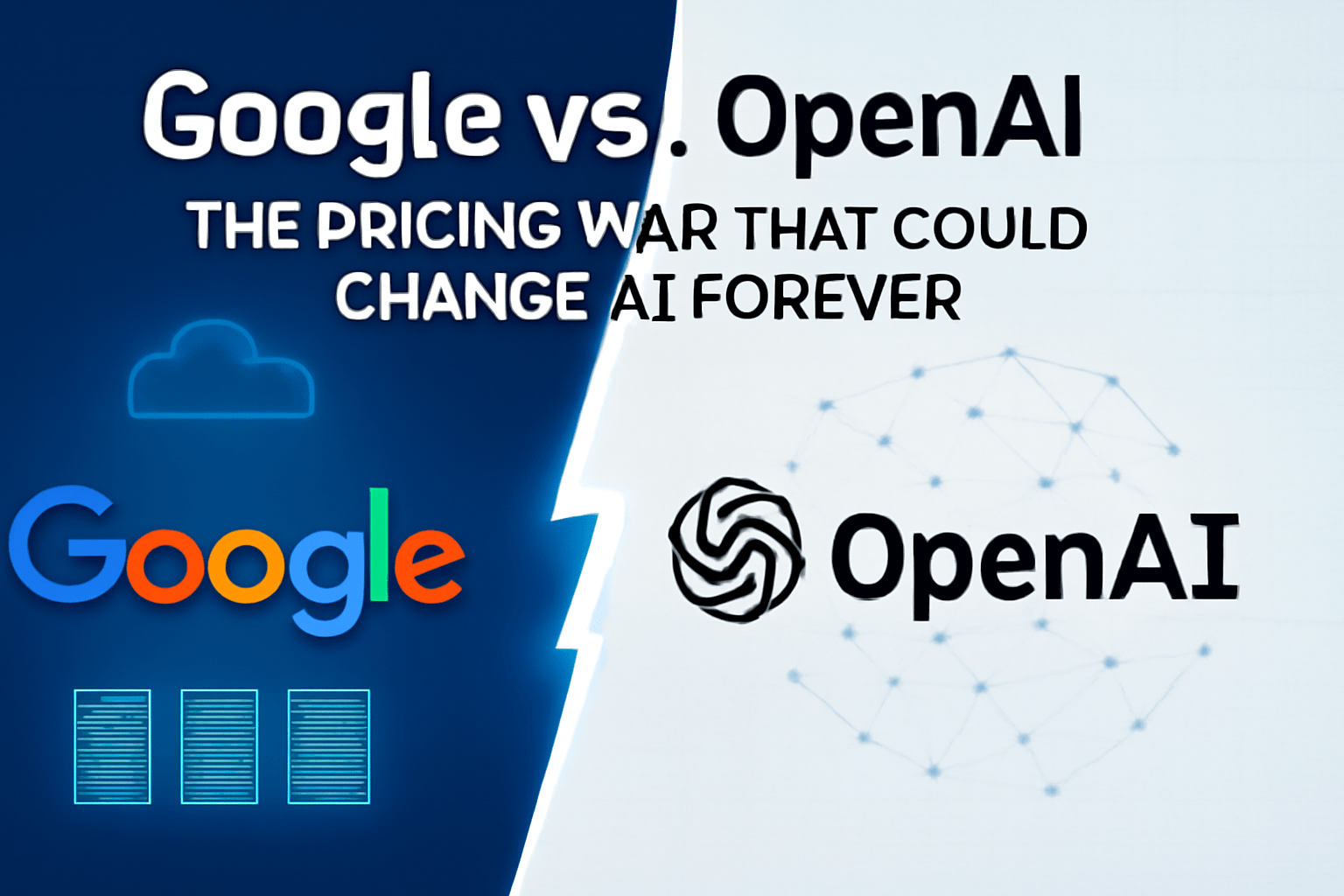Google vs. OpenAI: The Pricing War That Could Change AI Forever — Who Will Come Out on Top?

The ongoing battle for lower prices between Google and OpenAI is indicative of the broader struggle for supremacy in the AI and cloud services market. As these companies compete fiercely to dominate this high-growth sector, their strategies and resources will be instrumental in determining the ultimate victor. We will examine the underlying forces driving this competition, the specific approaches being taken, and the possible outcomes.
Google: The Goliath with a Strategic Advantage
Infrastructure and Resources
Google’s massive infrastructure serves as a formidable asset in the cloud services arena. Its extensive global network of data centers, honed over years of technological advancement, provides unparalleled scalability and reliability. This robust foundation enables Google to optimize costs, potentially offering more competitive pricing while maintaining profitability compared to rivals.
AI Expertise and Integration
Google's pioneering work in AI, exemplified by breakthroughs like BERT and TensorFlow, solidifies its position as an industry leader. By seamlessly integrating these advanced AI capabilities into GCP, Google offers a compelling value proposition for businesses already within its ecosystem, streamlining the adoption and scaling of AI solutions.
Pricing Strategy
Leveraging its substantial financial resources, Google can employ aggressive pricing tactics to capture market share. This strategy includes offering flexible payment plans, bundled services, and enticing discounts to reduce barriers to entry for a diverse customer base, from startups to large enterprises.
Customer Base and Ecosystem
Google's existing customer base is another significant advantage. Many companies that already use GCP for their cloud needs may find it more convenient and cost-effective to adopt Google’s AI solutions, thanks to tight integration and potential cost savings through bundled services. Moreover, Google's ecosystem, which includes productivity tools like Google Workspace, further strengthens its value proposition.
OpenAI: The Agile Innovator
OpenAI has rapidly established itself as a formidable force in AI, despite its smaller size. Its groundbreaking GPT models have positioned the company as a pioneer in natural language processing, capturing the attention of developers, researchers, and businesses alike. This strong brand recognition, built on a foundation of innovation, gives OpenAI a unique advantage.
Rather than competing head-to-head with tech giants, OpenAI appears to be strategically focusing on specific market segments. By tailoring its offerings to startups, SMEs, and developers seeking advanced AI solutions without the burden of building models from scratch, OpenAI can carve out a niche and foster a loyal customer base. A combination of competitive pricing, user-friendly tools, and a deep commitment to AI excellence could be the key to sustained growth.
In response to Google's aggressive pricing, OpenAI may adjust its own pricing models, offering tiered plans that cater to different needs. This could include lower-cost options for smaller users or specialized plans for enterprise clients that require more significant resources. Additionally, OpenAI could enhance its platform with more robust tools, better documentation, and stronger community support to add value beyond just the cost.
Potential Outcomes and Considerations
Market Segmentation: Different Leaders in Different Areas
The winner of this pricing war may not be a clear-cut single entity. Instead, it’s likely that both Google and OpenAI will find success in different market segments. Google, with its broad infrastructure and deep pockets, may dominate the enterprise sector, where large companies prefer the security and scalability of a well-established platform. OpenAI, on the other hand, could maintain a stronghold in the developer community and among smaller businesses that value cutting-edge technology and ease of use.
Long-Term Sustainability
Pricing wars are often unsustainable in the long term. If either company engages in deep discounting to gain market share, it could hurt profitability. Google, with its diversified business model, can afford to take such a hit more than OpenAI, which is more focused on AI. However, OpenAI's specialized focus allows it to iterate and innovate faster, potentially outpacing Google in certain niches.
Customer Loyalty and Switching Costs
Beyond pricing, the battle will also be fought over customer loyalty and switching costs. Google’s deep integration with its other services means that once a company is entrenched in the Google ecosystem, the cost and effort to switch to another provider could be significant. OpenAI might counter this by offering seamless integration with other platforms, strong customer support, and a vibrant developer community that fosters innovation and loyalty.
Regulatory and Ethical Considerations
As AI becomes more pervasive, regulatory scrutiny is likely to increase. Companies that can navigate this landscape effectively will have an advantage. Google, with its vast resources, is better positioned to handle regulatory challenges globally. OpenAI, however, has a reputation for ethical AI development, which could appeal to customers concerned about the societal impact of AI.
Final Thoughts: Who Will Emerge as the Leader?
The pricing war between Google and OpenAI is not just about who can offer the lowest cost but who can provide the most value. Google has the advantage of scale, integration, and a broad customer base, which could make it the leader in enterprise AI and cloud services. OpenAI, with its technological edge and focus on innovation, might continue to lead in specialized markets, particularly those where cutting-edge AI is a critical differentiator.
In the end, the "winner" may be determined by how well each company can execute its strategy, innovate, and meet the diverse needs of the market. The real victory might not be in a single company dominating but in the overall growth and evolution of AI technology as these titans push each other to new heights.

